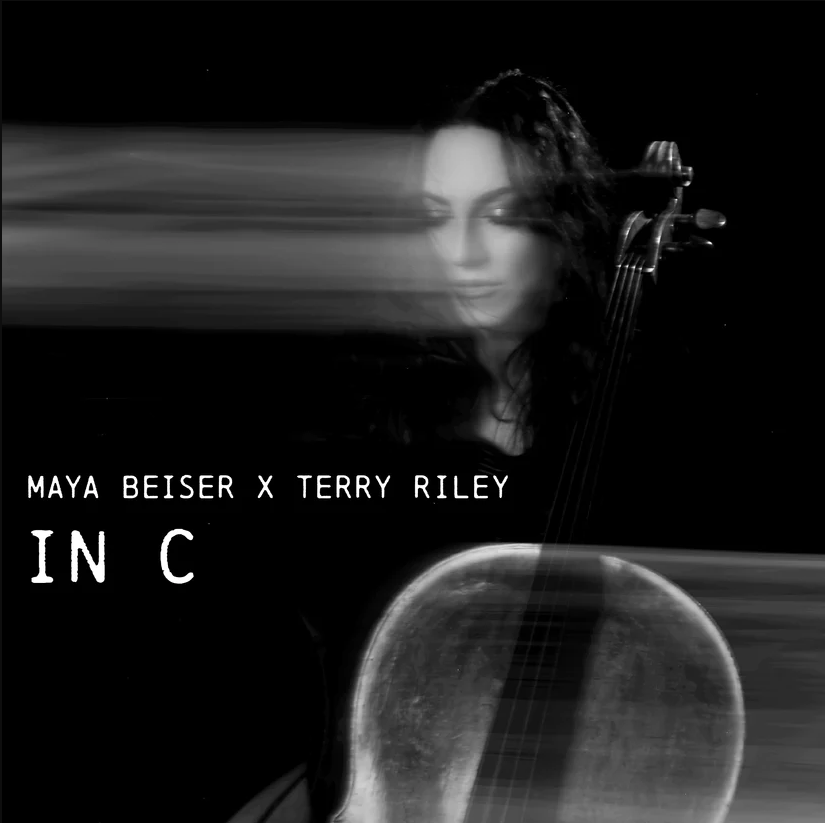Cellist Maya Beiser releases on Islandia Music Records a version of Terry Riley’s “In C” for solo cello.
In November 1964, at the San Francisco Tape Music Center, the world premiere (a pompous way of talking about what was, in reality, a concert given by a group of musician friends who were called, without knowing it yet, to completely change the world of contemporary music) of Terry Riley‘s In C, a fundamental work in the history of the musical current known as minimalism, took place.
In C is a work with a very simple score, which fits on a sheet of paper, in which there is enormous freedom to improvise, which means that each time it is performed it can become a different work. In short, In C consists of 53 short, numbered musical motifs, lasting between half a beat and 32 beats; each phrase can be repeated an arbitrary number of times at the discretion of each musician in the ensemble. Thus, each musician has control over the phrase he or she plays, and musicians are encouraged to play phrases starting at different times, even if they are playing the same phrase. Thus, although the melodic content of each part is predetermined, In C has elements of aleatoric music. The performance instructions indicate that the ensemble should try to play within two or three motives of each other. The motifs should be played in order, although some may be skipped. As detailed in some editions of the score, it is common for a musician to play the note C in repeated eighth notes, usually on a piano or a pitched percussion instrument (e.g. marimba). This functions as a metronome and is known as the “pulse”. It was Steve Reich – one of the musicians who participated in the premiere of the work at the San Francisco Tape Music Center, along with Jon Gibson, Pauline Oliveros, Stuart Dempster and Morton Subotnick, among others – who suggested to Riley the idea of the rhythmic pulse, thus radically altering Riley’s original composition, which had no predetermined rhythm.
To the numerous recordings of all kinds that have been made since the first one was released by CBS in 1968 (with Terry Riley as conductor and saxophonist; Jon Hassell, trumpet; Darlene Reynard, bassoon; Jerry Kirkbride, clarinet; David Shostac, flute; Jan Williams, marimba; Lawrence Singer, oboe; Margaret Hassell, piano; Stuart Dempster, trombone; Edward Burnham, vibraphone; and Edward Burnham, vibraphone and trombone), Riley has made a number of recordings; Edward Burnham, vibraphone and David Rosenboom, viola) is now joined by a very interesting version for solo cello by the American cellist (born in Gazit, Israel, on 31 December 1963, to an Argentinean father and French mother) Maya Beiser, a true figure in the field of the interpretation of the minimalist and contemporary repertoire. In fact, Beiser was already featured as a cellist on the recording of Bang on a Can released by Cantaloupe in 2001.
Although Maya Beiser x Terry Riley: In C is a recording for solo cello. It is her alone, but with several overlapping cello recordings, always maintaining that C pulse on which the sonic architecture of the album is built. “For me -Maya says in the liner notes,- “Terry Riley’s In C is an amalgamation of an ‘open source’ and ‘sacred text.’ In creating this album I was interested in finding the serendipitous rhythmic and melodic connections that emerge when reconstructing In C’s 53 melodic cells as a series of cello loops, floating above continuous C string cello drones. The album explores how the mysterious world of the cello’s C string, with its rich overtones and harmonics, informs and reshapes Terry’s work in an intimate, yet expansive iteration of this classic work. This is a personal journey into a piece which was originally created and has always been performed as a communal experience”. For his part, the composer, who has lived in Japan since his confinement, describes Maya’s recording as “stunningly beautiful”, and that “the overall shape flows so naturally and her cello sound is so warm and powerful.”
Although the duration of the work is indeterminate, the late double bassist Stefano Scodanibbio, who worked with Riley on many occasions, explained that the ideal duration is around an hour or, at most, an hour and ten minutes. In this case, Beiser has done it in 55 minutes. Divided on Spotify into ten movements, one of the most moving and surprising is called In C 4. Tomorrow, Saturday 6 April, the presentation concert will take place at the National Sawdust in Brooklyn, where Beiser will be accompanied by special guests percussionists Shane Shanahan and Matt Kilmer, to experience the hypnotic soundscape built out of a series of drones, live cello loops, and an immersive Meyer Sound Constellation system.
